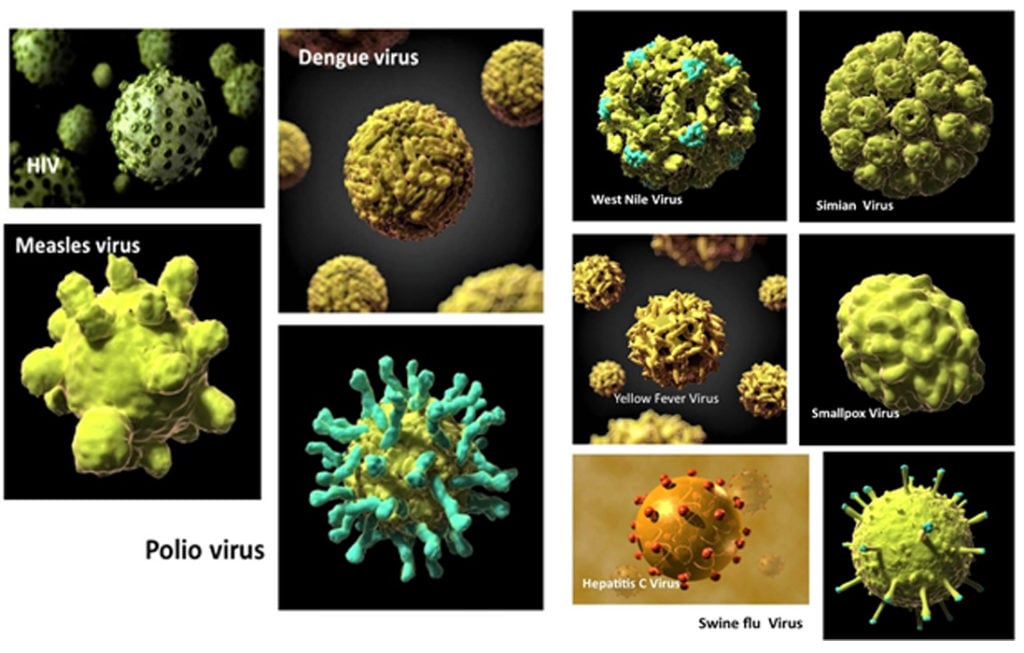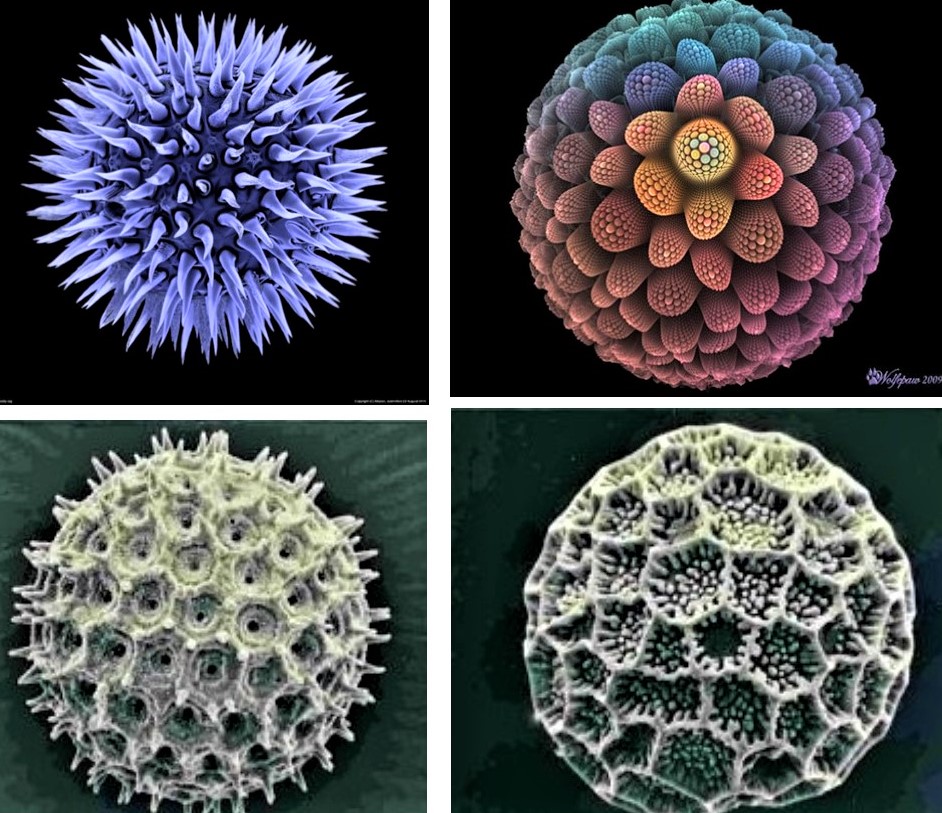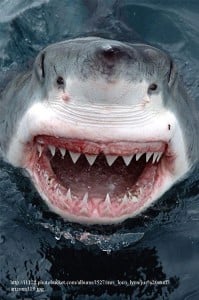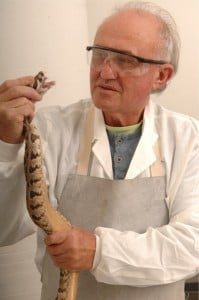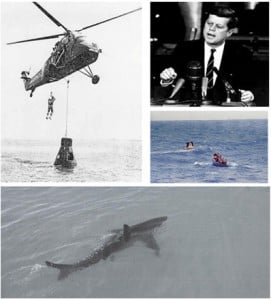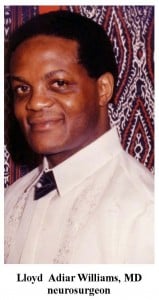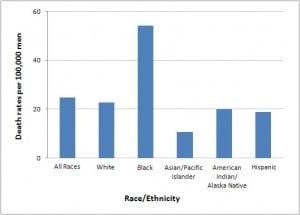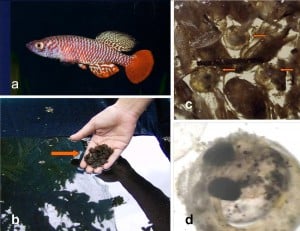Relax. This is not another story of the BP Deepwater Horizon oil spill in the Gulf of Mexico. This is even more up close and personal—it’s the daily oil spill on your skin.
It’s the middle of the New York summer. You sweat profusely most of the time. Worse, your natural skin oils just oozes out of control like the Deepwater Horizon pipeline to give you that uncomfortable, shiny, unhealthy look. Ladies, makeup just won’t hold long enough. You’re back again to the powder room to fix the ‘paint job.’ Guys, especially those who like their heads closely shaved as if they just came out of army boot camp or just out of jail, oils just drips down your face and make your head shine like a brand new bowling ball. If you are acne prone, then life gets even more miserable. And it’s all because of that tiny gland, called the sebaceous gland, alongside your hair follicle that spews out natural oils, called sebum. In the US, oily skin is a $1.2 billion dollar over-the-counter industry and about $ 2.5 billion for prescription drugs, if you have bad acne. Part of the success of that industry is because of people like you and me, the unlucky majority of really oily folks.
This topic is quite interesting for me for two reasons. First, I did spend a decade and a half in the olden days doing dermatology research, especially on sebaceous glands and hair. Second, just through serendipity, I have the answer to our oily problem. Now that I got your attention, let me tell you a little about why you need oil and how it happens to mess up your life too (Yes, sounds like the same argument for crude oil).
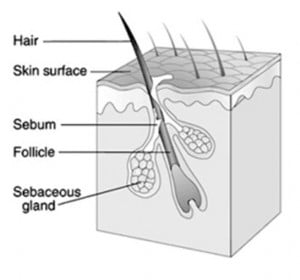
Cross-section of the skin showing the sebaceous gland and hair
There is an average of 100,000 hairs on your scalp, including fine barely visible hair and thick ones. Then there are those non-pigmented, fine hairs on your face, arms, legs and back. You are born with the same number of hair until you die, barring any major personal catastrophe like setting your hair on fire. In some men and women, the hair gets thinner and less pigmented giving that balding look if one is predisposed to baldness or the thinning look that comes with age. And, with each hair is your life time supply of oil from the sebaceous gland right next to it. Besides that we have the much larger apocrine sweat glands in our armpits, around the nipples and the genital area that produces more sweat. Initially odorless, the apocrine secretions become odorous depending on the mix of microorganisms present on your skin.
Some of us have bigger glands than others; those unlucky few have overactive ones. The sebaceous duct opens to the pores that deliver the oil outside of the skin. It oftentimes gets clogged with oil and dead epidermal cells and then you get blackheads or whiteheads. For many, this is already bad enough. But, for the 85% of teenagers and the minority of young adults in this country, it can transform into full blown acne when the trapped oils cause inflammation because the acne bacteria, Proprionibacterium acnes, starts proliferating using oil as its food source (Remarkably sounding like the oil eating marine bacteria in the Gulf) and converting the oil into irritants. Just think of it as fresh butter off the grocery store turning rancid after you leave it out in the counter for a while. By then you will be running to the corner drugstore to get some over the counter medication or go online for the super high tech de-plugging, skin rejuvenating, over-priced products shown on TV.
Both men and women get acne. The glands respond to the male hormone, testosterone, which the sebaceous cells convert to dihyrotestosterone to stimulate more oil production. The sebaceous cells at the base of the gland starts filling up with oil. It gets bigger and bigger as it is pushed out towards the center of the gland by new cells dividing and growing behind it. When totally filled to capacity (sort of like an oil tanker about to run aground), the cell bursts open into the open cavity of the gland and the spilled oil gets pushed up and out of the pores. Now you have a full blown oil spill and one that you can’t stop by capping the well. Women produce testosterone too from the adrenal glands, from the ovary or convert estrogen to testosterone at the level of the cell where enzymes convert these precursor hormones to more active ones. Some of us also have over active enzymes in the skin that convert more than it should or have more protein receptors than bind the hormone, transport it to the nucleus of the cell, stimulating more cells to divide and more oils to form. This is the biological recipe for your own personal nonstop oil spill.
You would think that since oils on our skin are such a pain, why it did not shrink throughout evolution as human beings get less and less hairy? Who needs oil anyway? Well, your natural oils lubricate your skin, preventing it from dehydrating and the thin coating of oil on your hair keeps it from drying up. The chemical composition of sebum is so uniquely different from other natural oils in our body. Why this is so remains a mystery to science, for now. Certainly there are antimicrobial peptides, such as cathelicidin, beta defensins and histone H4, present in the sebaceous glands that can kill Staphylococcus aureus and P. acnes. Moreover, acne is a concern probably only in the last 5,000 years, too short of a time span for evolution to allow natural selection for people with smaller glands or none at all. Or maybe, pimples were sexy before 5,000 years ago.
But, I think our skin oils have a higher purpose and that is to give our uniquely individual scent. In non-mammalian primates, such as gerbils, rats and mice for example, sebaceous gland secretions are the means of communicating individual identification and sexual attraction. Most likely early humans identify each other by their scent. Perhaps, the sense of smell was more heightened as a means of communication before language was invented. It still persists in our modern world only in some aboriginal cultures. In the Desana tribe of the Amazon and the Batek Negrito of the Malay Peninsula, tribal membership is based on similarity of body odor and marriage is allowed only to a person from another tribal group with a different odor. The Ongee of Andaman Islands, the Bororo of Brazil and the Serer Ndut of Senegal all recognize personal identity by the individual’s smell. I remember my college Anthropology 101 seeing photographs of aborigines from Papua New Guinea during their ritual of smelling the face, armpits and chest to recognize and welcome visitors from another tribe. Now, you can’t even dare to try that in the New York subway without getting seriously hurt or ending up in jail.
As human beings created larger, more complex societies, the value of smell has faded from memory and is retained in social customs without true connection to the sense of smell. An example is the Indian custom of smelling someone’s head as an affectionate greeting, a ritual dating back to thousands of years and even chronicled in ancient Indian texts as a “the greatest sign of tender love.” That understanding in today’s society is translated to a more commercial one, looking for the smell that pleases, that creates the urge to buy, that stimulates other senses, and especially that masks other smells. The sense of commercialism is starkly prominent in the bewildering array of perfumes in the market today.
Current research on smell is a sophisticated science using astounding technology that allows one to identify individual chemicals among the thousands that permeate the environment or that comes off the surfaces of plants and foods. While most research are in the food applications of smell, the more intriguing ones are on the search for that pheromone that attracts the opposite sex, the very basic of human interactions. The article by Saxton and his colleagues from the University of Liverpool described a steroid called androstadienone presumably from sebaceous/apocrine secretions that contribute to the smell of sweat and saliva that influence how women perceive the attractiveness of a male. What’s interesting was that the test environment for that study was the process of ‘speed-dating,’ that strange new ritual of the modern era, so we thought, that I am sure the Desanas, Baroros, the Ongees will find curiously familiar.
Since we don’t need so much oil in our modern world, how do we get rid of it and acne along with it? That has been a seemingly endless chase for solutions since the ancient Greeks and Egyptians. Today’s armamentarium includes remedies, such as sulfur, that are as old as the first written language. To cover all of these will bore you to death and, if you are already suffering from acne, you already know all about these anyway:
Intra-lesional steroid, benzoyl peroxide, antibiotics, retinoids, antiseborrheic medications, salicylic acid, alpha hydroxy acid, azelaic acid, nicotinamide, kera-tolytic soaps, combined estrogen/progestogen contraceptives, antiandrogens, topical retinoids such as (Retin-A), adapalene (Differin), and tazarotene (Tazorac), (marketed as Roaccutane, Accutane, Amnesteem, Sotret, Claravis, Clarus), nNicotinamide, (vitamin B3), Naproxen or ibuprofen for their anti-inflammatory effects, dermabrasion, phototherapy, deep penetrating light therapy, photodynamic therapy, surgical lancing, laser treatment, aloe vera, neem, turmeric, papaya, ananthamoola, azelaic acid (brand names Azelex, Finevin and Skinoren), heat, pantothenic acid, tea tree oil, zinc, tetracyclines, low glycemic index diet..…just to name a few.
Some are just methods, others are purely synthetic, some are derivatives from petroleum and the rest are natural extracts of plants. What is disconcerting these days is that what we thought was safe yesterday, is the new toxins of today. Pregnant women particularly are so concerned when using cosmetic products these days.
The idea
All these treatments are meant to shrink the sebaceous gland, kill the bacteria, reduce the inflammation or get rid of the oil. The last one, getting rid of the oil, received the least serious interest since you can’t make much money by simply selling blotting paper or selling soap to disperse the oil (dispersants in the Gulf oil spill are made from soap ingredients by the way). The commercial solution is always something that either sounds like a drug or is a drug or some esoteric formulation that combines all of these anti-acne effects for $80 bucks an ounce.
Why not just get rid of the oil? Seems easiest to do and least likely to involve anything that will have serious side effects. Just like skimming the oil off the ocean surface after the BP oil spill. It gets rid of the unsightly mess, keep the wildlife from being seriously damaged and not worry about the oil washing to the shore. Why not do the same for your face?
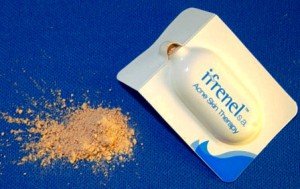
Ifrenel clay powder and single use daily pack
The idea is not unique, even for us. We’ve thought about it for many years, but never so seriously until serendipity took over (For the etymologically challenged, the word came from the name, serendip, given by Indian sailors thousands of years ago to the island we call now as Sri Lanka because they found it purely by chance. In those days, mariners rarely venture too far out of sight of land because they thought the world was flat and the ship falls off beyond the horizon—unless of course when storm blew you off course and land in Serendip by accident). Biological ideas don’t come often. Eureka moments are far between the ‘hurry up and wait’ mode of science. More often it comes through an unrelated event or a side observation. In this case, we were busy trying to develop a formulation for our barnacle, insect and shark repellent projects, looking at ways to improve the effect of this nontoxic, edible repellent. At the time we were working with a range of materials including clay. Also at the same time, it was a hot humid summer day, oil oozing out of my face. I thought wistfully that maybe I should try some of these clays on myself as I have never liked the thought of using blotting paper (I did try blotting paper before just to be fair) and washing with soap just moves oil around.
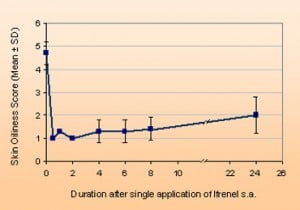
Decline in the perception of oiliness in women after single application of Ifrenel clay
I rubbed this new clay composition on my skin, then washed it off quickly because guys usually don’t want anything on that makes them look like a girl—no offense. Something unique happened. The oil went away with the clay, totally absorbed and washed off. And something else, my skin was softer, tighter, no shine and most of all, remarkably smoother—for almost the whole day! I do have my sensitive moments too and I had been around skin care companies long enough to know that we got something really amazing.
We eventually gave the clay a new name, Ifrenel Clay TechnologyTM, just to make it sound sexier (and French), but the composition is a proprietary mixture of clay materials found in nature. These clays are rare, not something you will find just anywhere, except from a few mine deposits in the United States. When one applies it to the skin only once, Ifrenel keeps the oil away for over 24 hours. When tested on women volunteers who rated their “oil spill” from 1 to 5, with 5 being your equivalent of the Deepwater Horizon scale, the feeling of being oily went away in 10 minutes and lasted for the next 24 hours, at least. My daughters started using Ifrenel two years ago instead of buying those brand items off TV ads (saved me a lot of bucks).
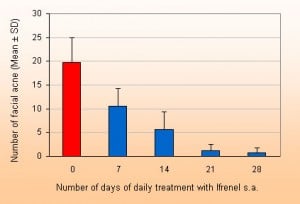
Reduction of acne in women after daily use of Ifrenel
Then something else happened. Acne went away and rarely come back, unless they forget using it. So, off we go running another clinical trial and demonstrating that one can actually clear acne in a week. The inflammation stopped within two days. That’s because the acne bacteria don’t have anything to feed on and maybe taken away with the clay too. Cystic acne can be painful to the touch, just ask anyone who has it. No longer after only two days of a single use each day because the acne bacteria is not there to convert oil into irritants. But remember, Ifrenel is not a cure. It just takes away your oil spill. Acne will come back after a week if you stop clearing your oil away.
This was a pleasant distraction from our usual marine science projects and certainly far from our malaria projects too. Off we went to file patents for this, then launched a new company based on the technology, called Ifrenel (from I feel fresh and ‘naturele’). It will be a hard fight to get it in the store shelves, but we will manage because we aree so confident that it works after tests in over a thousand women. For men, you can apply it on your face and your shiny ‘bowling ball’ will have that matted, healthy look very quickly, without anyone knowing about it.
Is this so unique just because I stumbled on it? Without sounding like an infomercial, IfrenelTM (and its companion product called ClaynTM for just those with the oily problem without acne) is all natural clay. It works by applying the powder on your skin when it’s dry, just before you wash it, by rubbing with your fingers (see video link below). This also gives you that microdermabrasion workout that removes dead skin and residual cosmetic chemicals off your face. When you wash it away, the oil goes with the clay-water mix. Can’t apply when you skin is wet; the Ifrenel clay will absorb water and lessen the effect. Not an easy thing to do because we are all conditioned to the soap and water routine. This is better for you than soap so get used to it quick! Without oil, your P acnes bacteria don’t grow, your pimples and blackhead disappear and your skin is smooth as silk all day. No kidding. And, your make up stays on much longer, saves you money in the long run and spare the wear and tear on your shoes going back and forth the powder room. There are no emollients, no fancy petroleum chemicals and no silicone to make it smooth. It’s just your fingers, your skin and Ifrenel clay.
And how about odor? It does even more remarkable things that I will tell you one day soon. I might get to like dermatology research again after all these years.
Now that this oil spill problem is solved, time to get back to more marine sciences. Next time I will tell you about shark repellents. Not having one at the wrong time can really mess up your day permanently.
Jonathan R. Matias
New York, NY
Poseidon Sciences Group www.poseidosciences.com
About Ifrenel http://www.ifrenel.com/
http://amominredhighheels.com/ifrenel-acne-skin-therapy/
The science of Ifrenel
http://ifrenel.com/index.php?about&aid=5
http://www.ifrenel.com/upload/about/ifrenel_dr_marty_sawaya_oily_skin_acne.pdf
http://ifrenel.com/index.php?demo (how to use the product; must see if you want to get best benefit)
On the science of smell
http://www.lifeinthefastlane.ca/science-of-the-smell-factor/weird-science
Saxton TK, Lyndon A, Little AC, Roberts SC. 2008 Evidence that androstadienone, a putative human chemosignal, modulates women’s attributions of men’s attractiveness. Hormones and Behavior. 54(5):597-601.
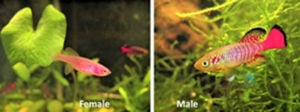
 Other species of marine animals also show a diverse array of surface spikes, depending on the survival requirements. Some that need to attach to surfaces show spike patterns while others with different ecological issues show different morphology. For example, here is a photo of the zooplankton copepod that represents 80% of the zooplanktons in the Yellow Sea. It does show its own style of spikes on the surface of the outer egg envelope.
Other species of marine animals also show a diverse array of surface spikes, depending on the survival requirements. Some that need to attach to surfaces show spike patterns while others with different ecological issues show different morphology. For example, here is a photo of the zooplankton copepod that represents 80% of the zooplanktons in the Yellow Sea. It does show its own style of spikes on the surface of the outer egg envelope. This corona-like pattern is not only confined to marine and freshwater species. Perhaps the most striking diversity of surface structures can be found in pollen grains. A cursory search of pollen grain images in Pinterest and other websites demonstrates a vast array of surface modifications to allow pollen to attach to different substrates.
This corona-like pattern is not only confined to marine and freshwater species. Perhaps the most striking diversity of surface structures can be found in pollen grains. A cursory search of pollen grain images in Pinterest and other websites demonstrates a vast array of surface modifications to allow pollen to attach to different substrates.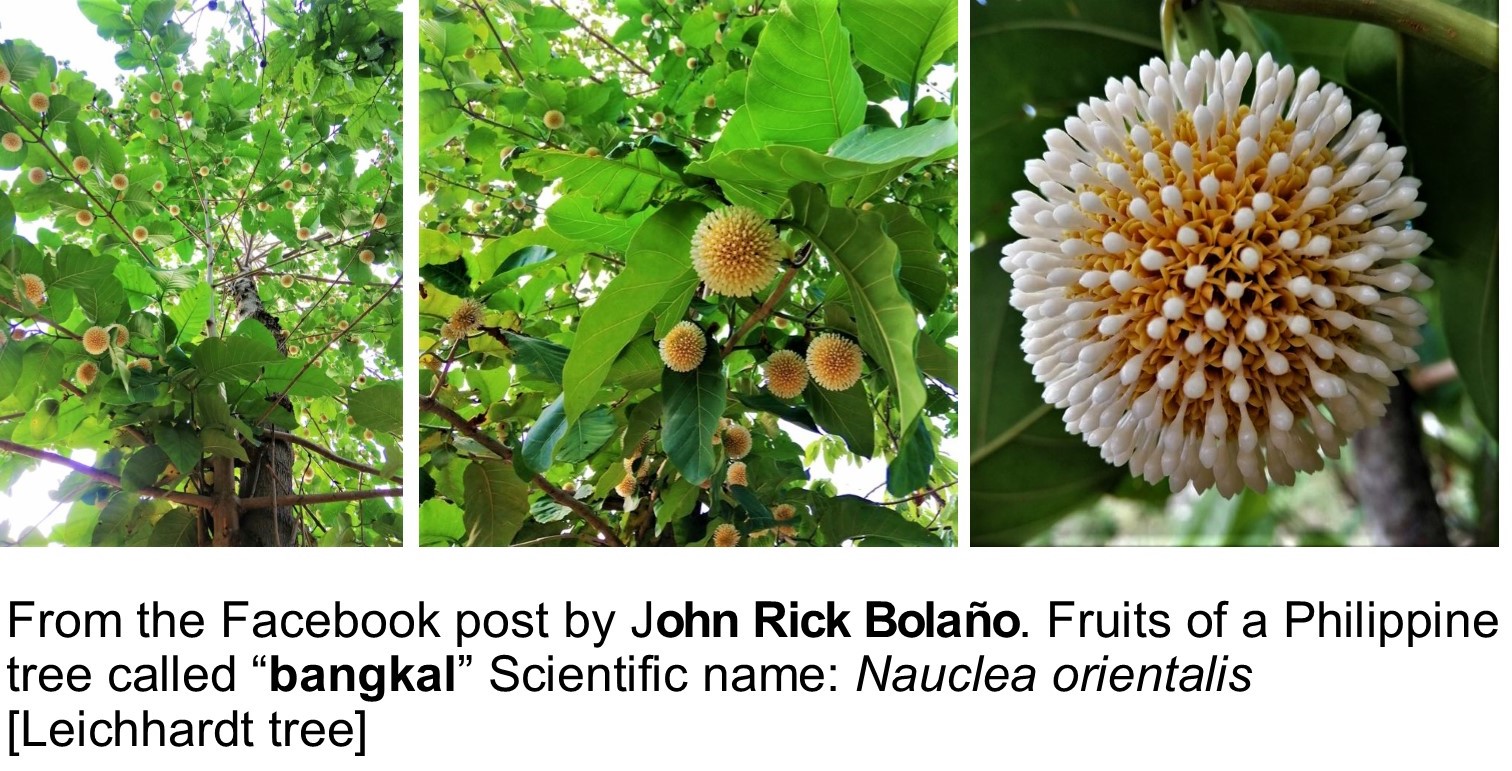 Though viruses seem out of this world, their surface morphology is more common in nature than we think. What is shown here is just a glimpse of how diverse these microscopic surface structures can be. I am sure one can find even better examples in the web.
Though viruses seem out of this world, their surface morphology is more common in nature than we think. What is shown here is just a glimpse of how diverse these microscopic surface structures can be. I am sure one can find even better examples in the web.
